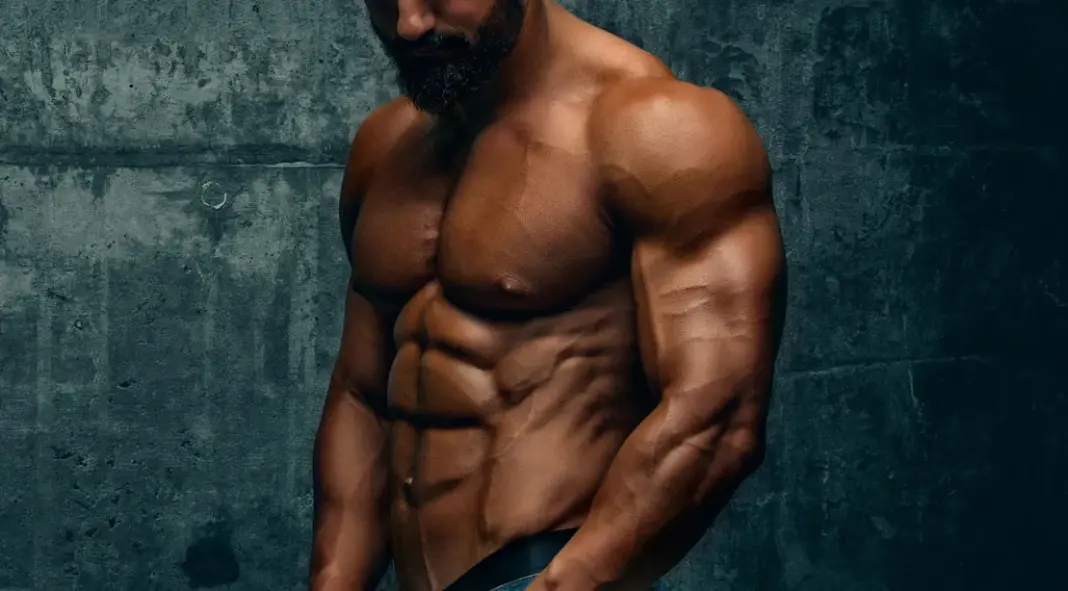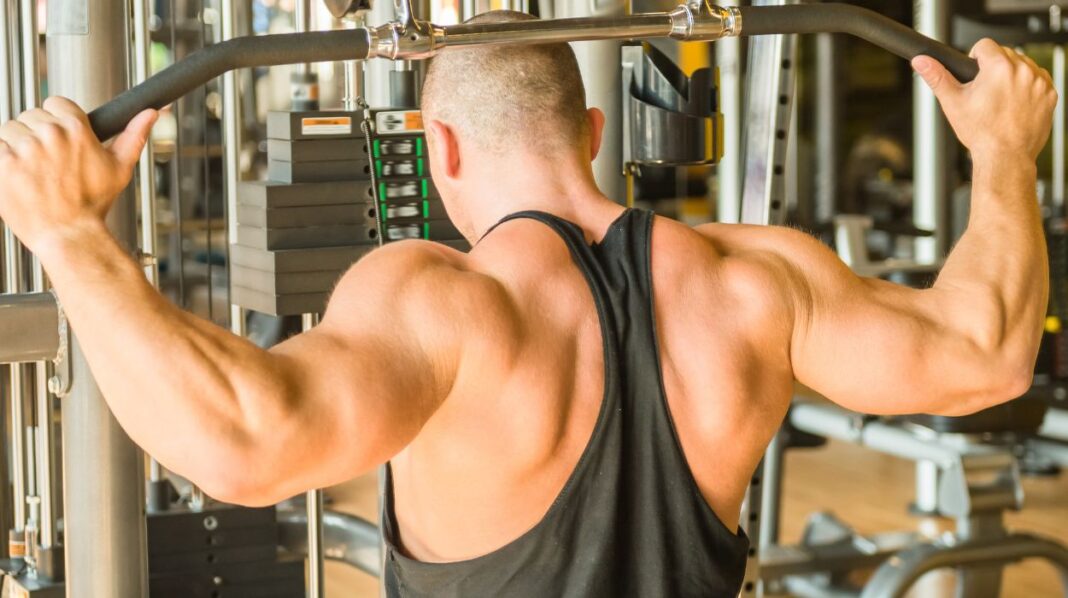How to Grow Side Delts for 3D Shoulders: A Bodybuilder’s Blueprint
Walk into any gym and you’ll see plenty of lifters pressing heavy weights, chasing big numbers on overhead presses, hoping for those “capped delts” that make the upper body pop. But here’s the truth: if your side delts aren’t getting focused attention, your shoulders will always look flat from the front and narrow from the side.
The lateral deltoids — also called the medial head — are the key to that 3D shoulder look that defines a strong, aesthetic physique. Whether you’re on stage, taking progress pics, or just want to fill out your T-shirts, growing your side delts is non-negotiable.
In this guide, we’ll break down exactly how to target, train, and grow your side delts with precision and purpose — including movement selection, weekly programming, and the cues that make all the difference.
Understanding the Side Delt: What It Actually Does
Before we jump into sets and reps, let’s get clear on the function of the side delts.
- ✅ Anatomy: The lateral head of the deltoid sits between the anterior (front) and posterior (rear) heads. Its fibers run vertically down the side of the shoulder.
- ✅ Function: Its main job is shoulder abduction — lifting your arm out to the side, away from your body.
- 🚫 Misconception: Overhead presses mainly target the front delts and upper chest. While side delts get some assistance work during pressing, they’re not being maximally stimulated.
- ✅ Training Strategy: To grow them, you need direct lateral isolation work — especially with controlled form and tension through the full range.
Top 5 Side Delt Exercises for Mass and Shape
These exercises aren’t flashy. But they’re effective — when done with intent.
Single-Arm Cable Lateral Raise
Why it works: Cables maintain tension throughout the range of motion — unlike dumbbells, where tension drops off at the top and bottom.
Execution tips:
- Stand with the pulley behind or slightly beside you.
- Let your arm move in a slight arc in front of your body, not directly to the side — this better aligns with the delt fibers.
- Pause at the top for 1–2 seconds. Slow on the way down.
📌 Sets/Reps: 3–4 sets of 12–15
📌 Pro Tip: Lean slightly away to increase range of motion.
Dumbbell Lateral Raise (Standing or Seated)
Why it works: A bodybuilding staple — but only if done with discipline.
Execution tips:
- Lean slightly forward (10–15 degrees) to bias the side delt.
- Lead with your elbows, not your hands. Keep pinkies slightly higher than thumbs.
- Stop at shoulder height. Don’t swing or “shrug” the weight up.
📌 Sets/Reps: 3–4 sets of 10–15
📌 Pro Tip: Use lighter weights with slow eccentrics (2–3 seconds down).
Machine Lateral Raise
Why it works: Machines reduce the need for stability, letting you isolate and overload the lateral delts.
Execution tips:
- Adjust the pad height so the movement starts near your side, not too far forward.
- Keep your traps out of the movement — focus on moving from the shoulder joint.
- Use higher reps and controlled form. This is a great place for drop sets or rest-pause techniques.
📌 Sets/Reps: 3 sets of 15–20
📌 Pro Tip: Hold the top position for 1–2 seconds to increase time under tension.
Lean-Away Lateral Raise (Cable or Dumbbell)
Why it works: Leaning away increases the working range of motion, especially in the top half, where dumbbells normally lose tension.
Execution tips:
- Hold onto a rack or cable post, lean your body about 30 degrees.
- Raise the dumbbell or cable arm in a slight arc forward.
- Focus on peaking the contraction at the top.
📌 Sets/Reps: 2–3 sets of 12–15
📌 Pro Tip: Great for advanced lifters as a finisher or burnout movement.
Lateral Raise Superset (DB → Cable → Partials)
Why it works: Accumulates massive volume and fatigue while hitting different strength curves.
How to do it:
- 10–12 reps dumbbell lateral raise
- 12–15 reps cable lateral raise
- 10–15 partial reps (bottom half) with dumbbells
Rest 90 seconds, repeat 2–3 rounds.
📌 Pro Tip: Use light weights and focus on burn and squeeze — not load.
Side Delt Programming Strategy: Volume, Frequency, Progression
Growing the lateral delts isn’t about maxing out your overhead press. It’s about consistent, targeted work with appropriate volume and recovery. Here’s how to do it:
🔁 Frequency:
- Train 2–3 times per week.
- Split your side delt volume across different sessions: push days, shoulder days, or finishers.
📊 Weekly Volume:
- 12–20 total sets per week is optimal for hypertrophy.
- Use at least 2–3 different exercises across your weekly programming.
🎯 Reps and Tempo:
- Stick with moderate to high reps: 10–20 per set.
- Focus on strict form and slower eccentrics (2–3 seconds down).
- Incorporate paused reps at the top for time under tension.
📆 Sample Training Split for Side Delt Focus
Here’s how to build your week if your goal is serious lateral delt growth:
🔹 Push Day 1:
- Dumbbell Lateral Raise – 4 sets x 12–15
- Overhead DB Press – 4 sets x 8–10 (front delts + compound work)
🔹 Shoulder Isolation Day (or Upper Body):
- Cable Lateral Raise – 4 sets x 15
- Machine Lateral Raise – 3 sets x 20
- Rear Delt Fly – 3 sets x 15 (balance the shoulder)
🔹 Push Day 2:
- Lateral Raise Superset (DB → Cable → Partials) – 3 rounds
- Lean-Away Raise – 2 sets x 12
Technique Cues That Make All the Difference
Form tweaks are what separate the guys who look like they train from the ones who just show up.
✅ Lead with elbows, not wrists — this keeps the traps quiet.
✅ Lean slightly forward — it biases the side delt fibers.
✅ Pinkies higher than thumbs — externally rotates the shoulder slightly.
✅ No momentum — strict reps build more muscle than sloppy PRs.
✅ Pause at the top — that’s where the delt does the most work.
Common Side Delt Mistakes (That Kill Your Gains)
- Using too much weight.
If you’re swinging dumbbells with half-reps, you’re not building delts — you’re just moving weight. - Turning raises into shrugs.
Overusing the upper traps takes tension off the delts. Keep your shoulders down and elbows high. - Only training side delts once a week.
The medial head recovers fast. Hit it multiple times per week for better growth. - Neglecting cables.
Cables give you constant tension — essential for hypertrophy. Use them more.
Final Thoughts: Train Side Delts Like They Matter — Because They Do
If you want bigger arms, a wider frame, and that 3D look that separates real lifters from average gym-goers, start prioritizing your lateral delts.
You don’t get capped shoulders by accident. They come from:
- Isolation
- Precision
- Volume
- Patience
Make cables, strict raises, and high-rep sets part of your weekly routine. Keep form dialed in. Track your progress. And give your side delts the same intensity you give chest or arms.
Because when your side delts grow, your entire physique transforms — instantly wider, stronger-looking, and more complete.
Ready to build round, powerful shoulders?
Try this week’s delt workout from the guide above — and commit to 8 weeks of focused lateral work. You’ll be shocked at the difference.
Let your arms hang. Check the side view.
If your delts are capping, you’re winning.
🔗 Related Articles:
- Complete Shoulder Training Guide
- Best Shoulder Exercises Ranked
- Rear Delt Training That Works
- Fixing Shoulder Training Mistakes





